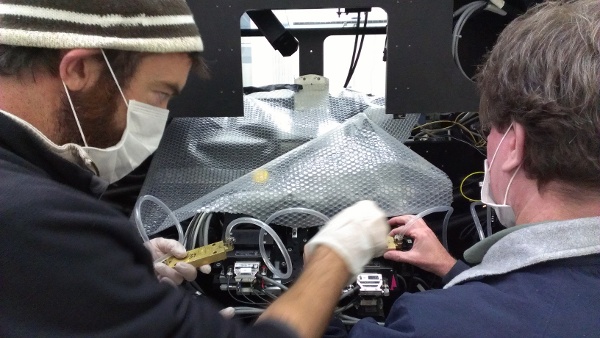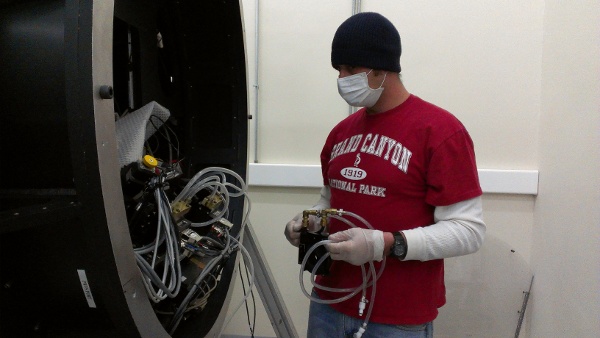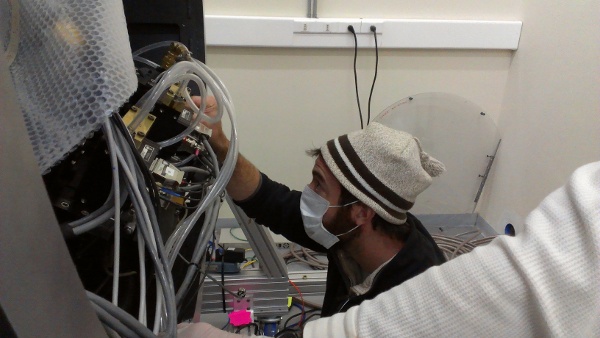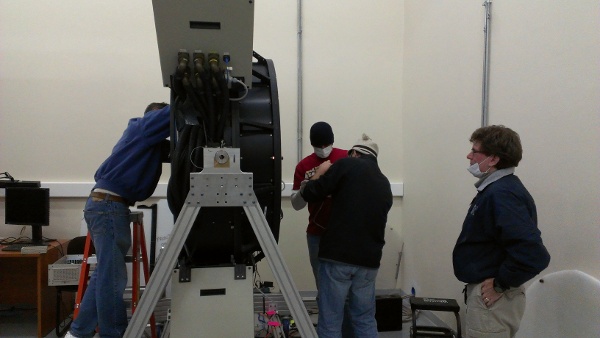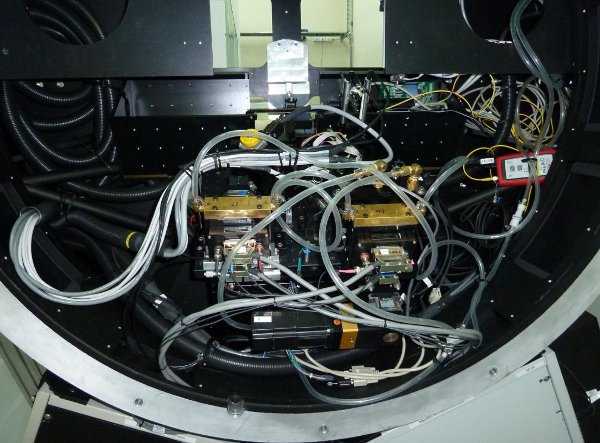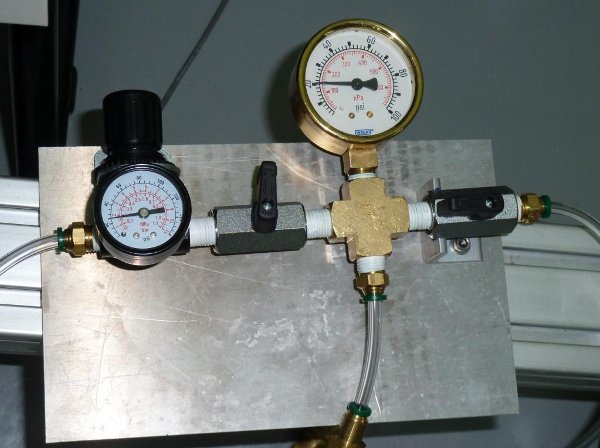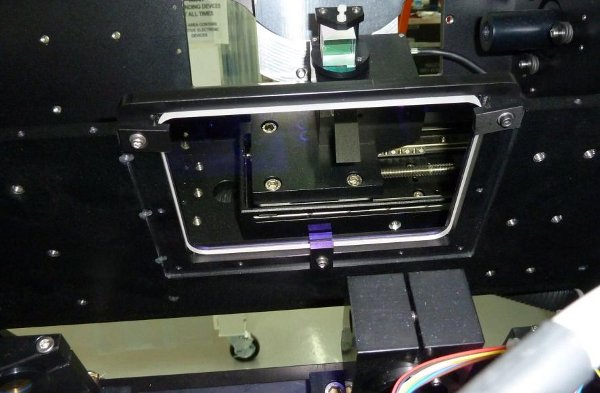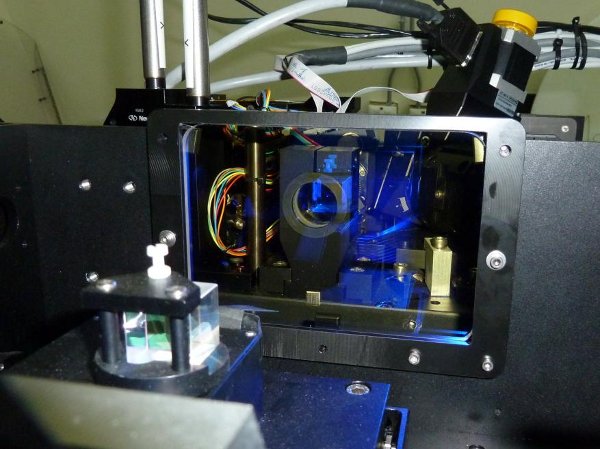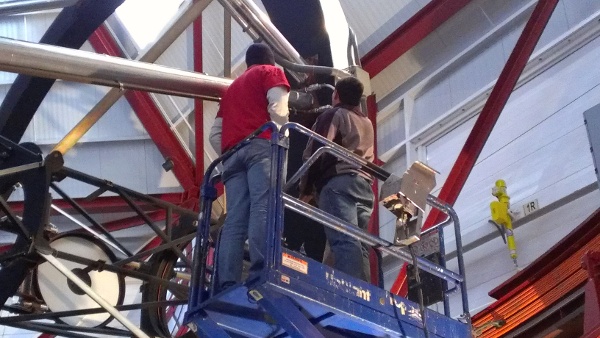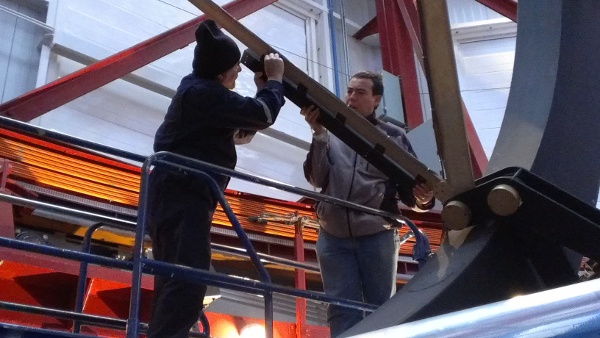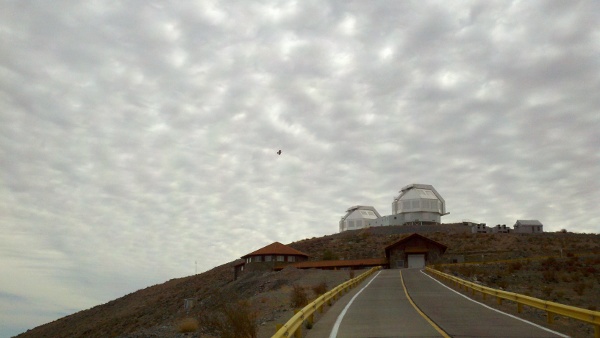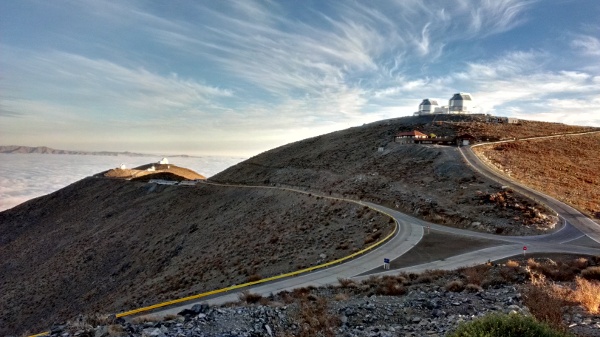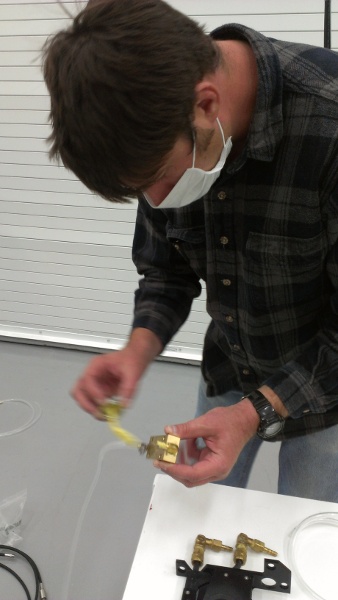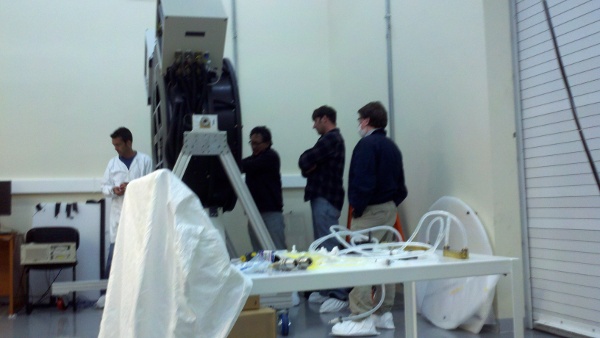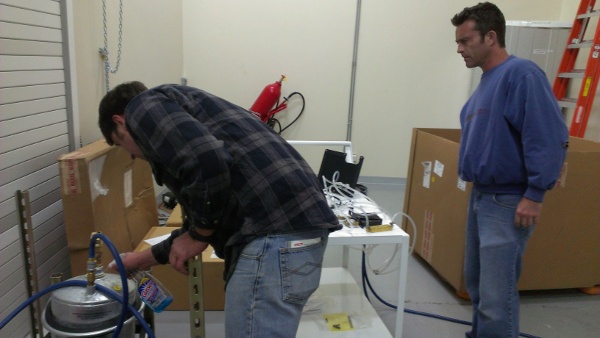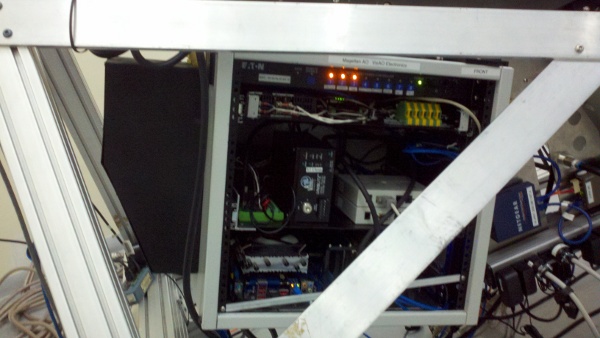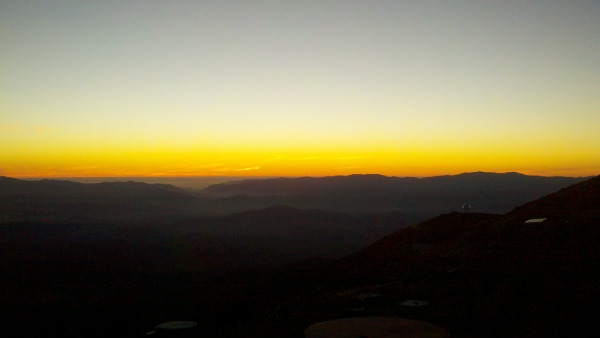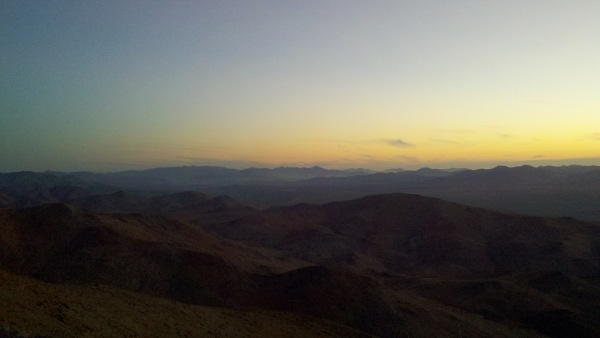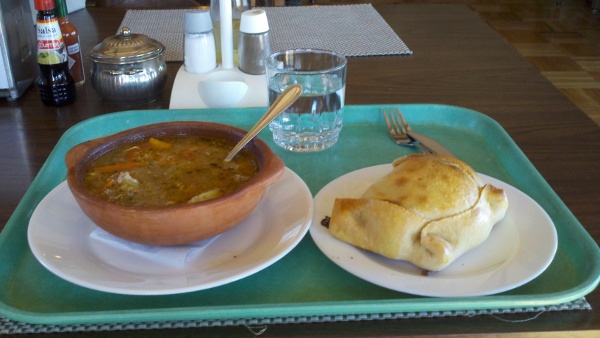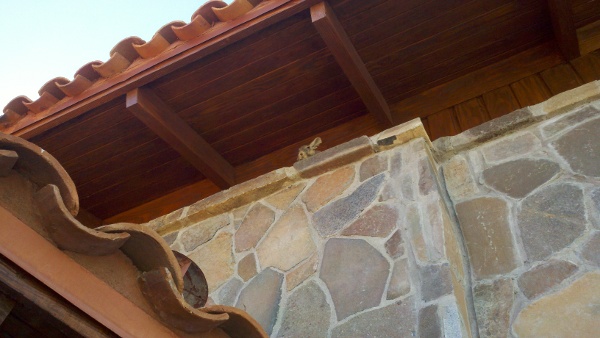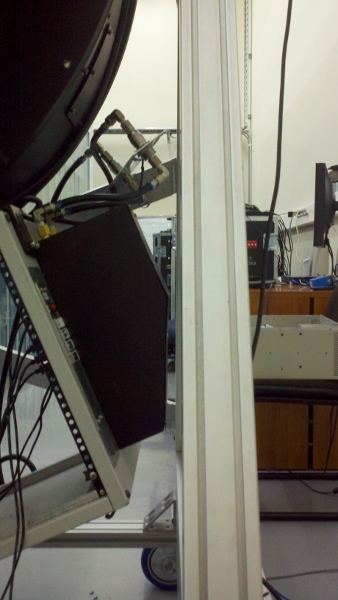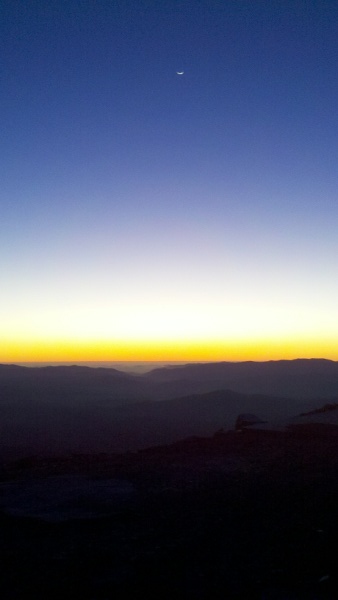This morning we woke up to this:
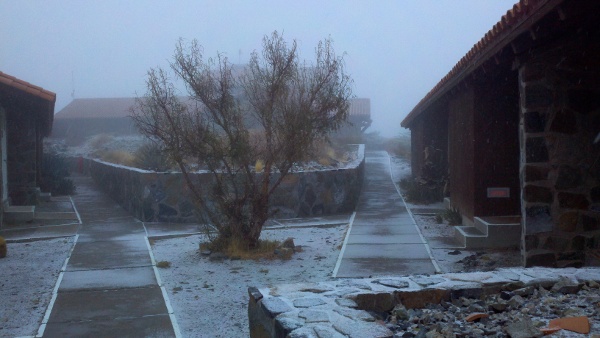
We’re here for a reason – to find out what doesn’t work so we can fix it before the real deal happens in November. Today’s discovery was that the planned route for our cable wrap through the Nasymyth platform deck won’t work. Our instrument has to rotate to track the sky through the night, which means our power, data, and cooling lines all have to rotate with it. So we need a cable wrap to manage them as they get longer and shorter. Tyson and Jason are busy sketching out plan B.
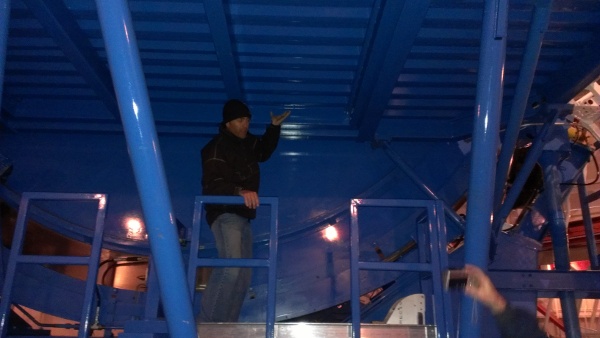
Speaking of cables, the staff has been running new network fiber for us. Our system moves lots of 1s and 0s every second, so we have our own networks to handle it all.
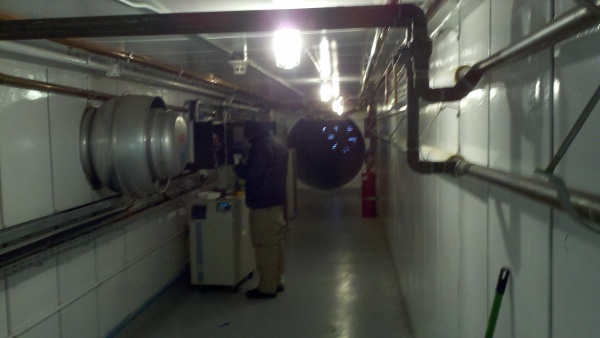
The observatory was inside a cloud for most of the day. We frequently couldn’t see the next building over.
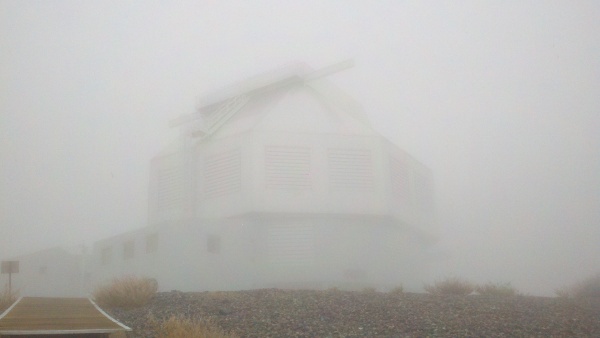
Tonight’s quote: “Ok, whoosh is maybe a strong term. More like swish.” (Laird Close, discussing rotator speeds and decapitation)
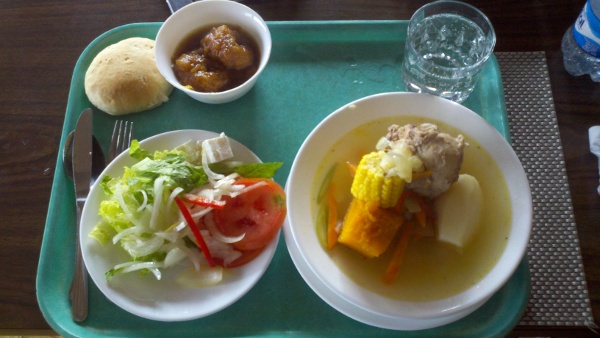
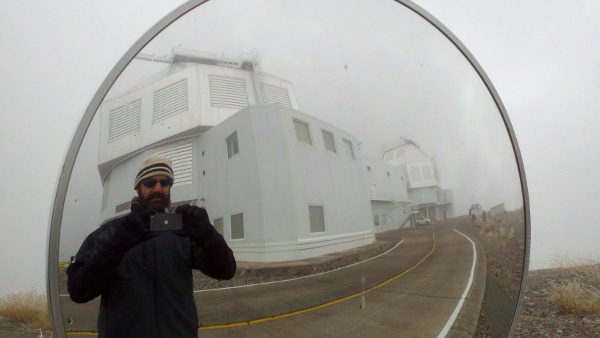

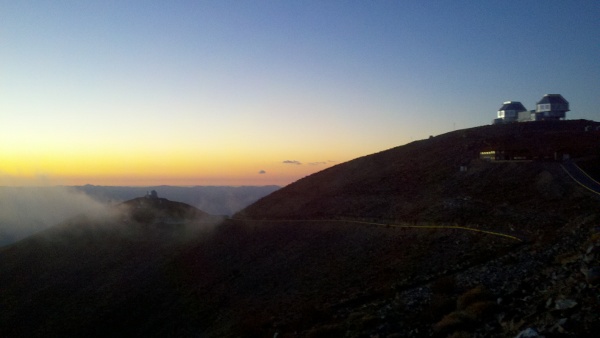
Days without a motherboard failure: 3
